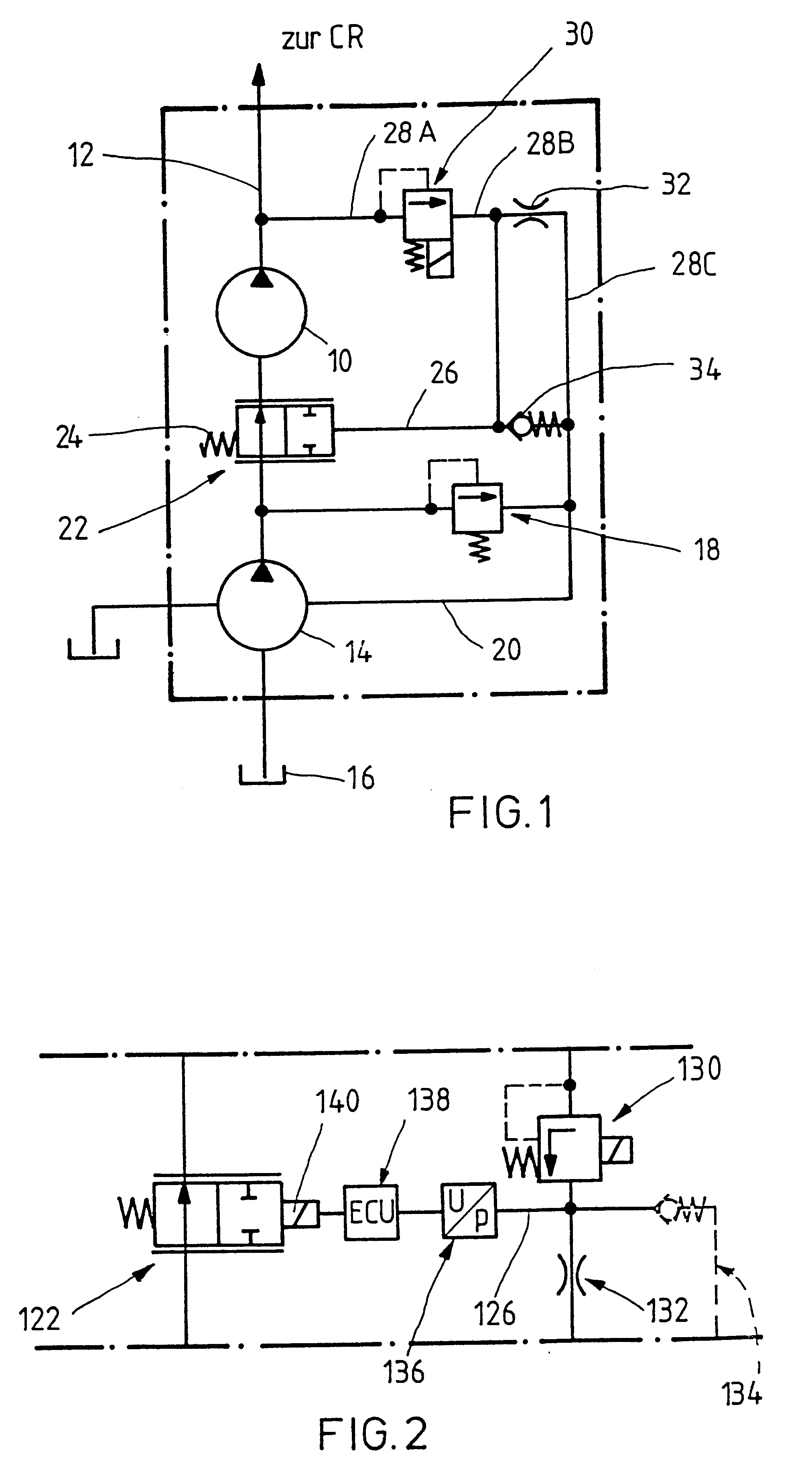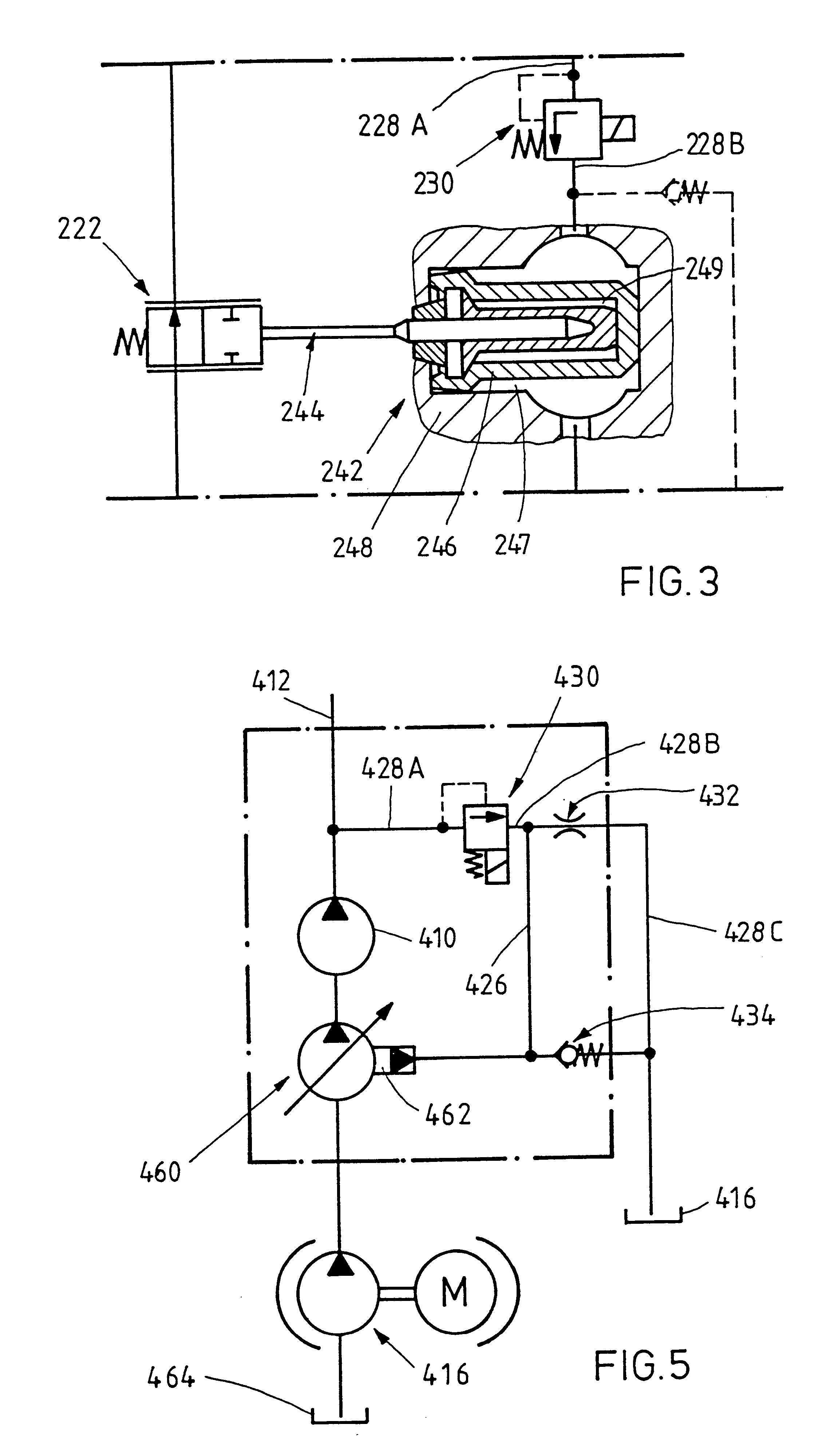Control for a fluid pressure supply system, particularly for high pressure in a fuel injection system
a fluid pressure supply and control technology, applied in the direction of electric control, positive displacement liquid engine, pump parameter, etc., can solve the problems of insufficient response behavior and too slow control speed in certain areas of application, lack of dynamics, and the high pressure area, i. e. the common rail, cannot be relieved
- Summary
- Abstract
- Description
- Claims
- Application Information
AI Technical Summary
Benefits of technology
Problems solved by technology
Method used
Image
Examples
Embodiment Construction
A high-pressure pump in FIG. 1 is identified by the reference numeral 10, which for example is designed as a radial piston pump and is able to build up extremely high pressures in a high-pressure line 12 leading to the so-called "common rail" of a fuel injection system. The high-pressure pump 10 is designed similar to a radial jet pump, i.e. it is able to provide a changing conveying output with an unchanged stroke and as a function of the pressure fluid supply. The high-pressure pump is supplied by a pre-conveying pump 14, i.e. a low-pressure pump, which aspirates pressure fluid, i.e. fuel, from a tank 16. The pre-conveying pump 14 is protected by means of a pressure control valve (5 bar valve) 18. The corresponding return line leading via the pre-conveying pump 14 to the tank is identified by 20. In order to control the pressure in the common rail, to which individual consumers, not shown in detail, in particular injection nozzles of the internal combustion engine, are connected, ...
PUM
 Login to View More
Login to View More Abstract
Description
Claims
Application Information
 Login to View More
Login to View More - R&D
- Intellectual Property
- Life Sciences
- Materials
- Tech Scout
- Unparalleled Data Quality
- Higher Quality Content
- 60% Fewer Hallucinations
Browse by: Latest US Patents, China's latest patents, Technical Efficacy Thesaurus, Application Domain, Technology Topic, Popular Technical Reports.
© 2025 PatSnap. All rights reserved.Legal|Privacy policy|Modern Slavery Act Transparency Statement|Sitemap|About US| Contact US: help@patsnap.com



